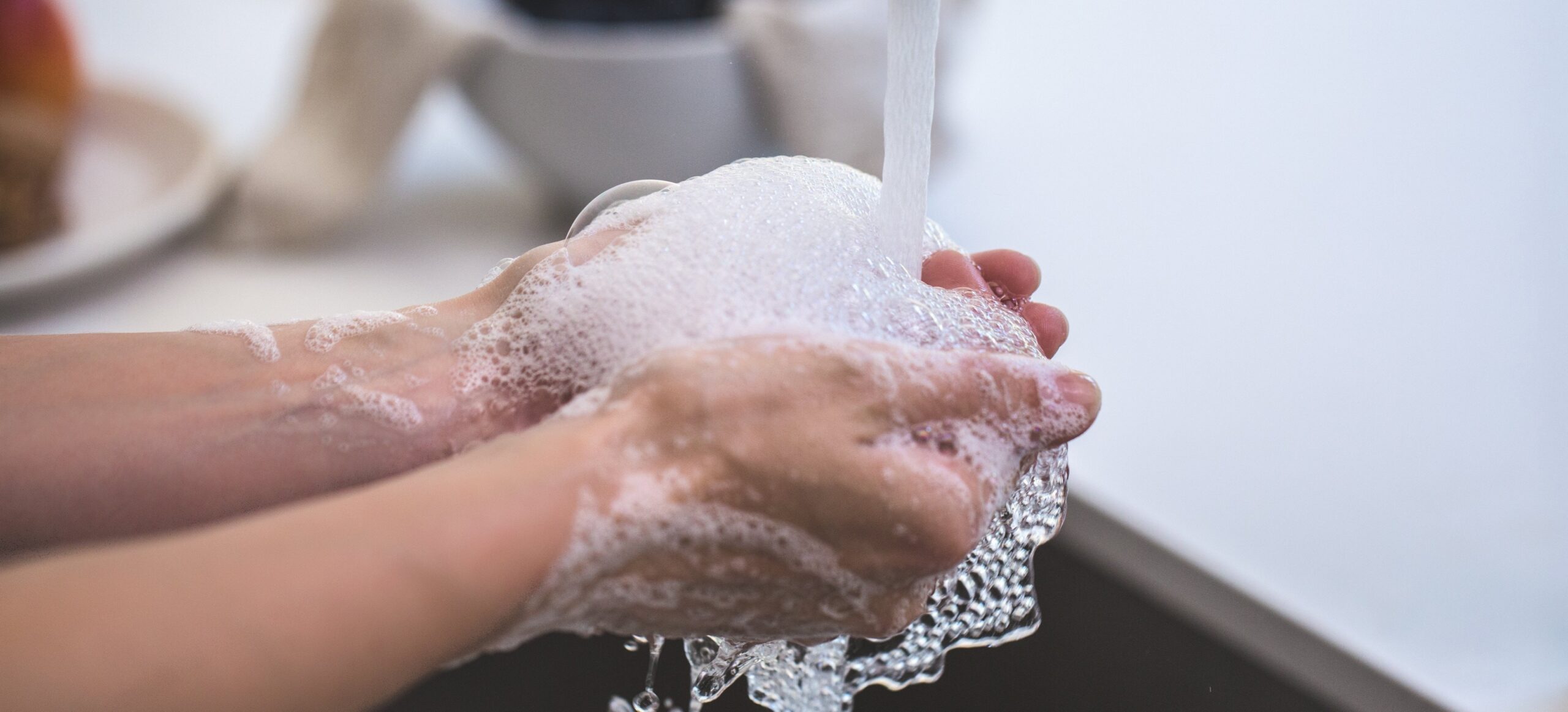Hand Washing vs Sanitizer

Hand Washing vs Sanitizer: How to Protect Your Home From Disease
A recent study of dust in over 1,200 homes found that, on average, there were over 9,000 different species of bacteria, fungi, and microbes. Don’t be alarmed — this is perfectly normal. Germs are all around us all the time and for the most part, they are not an everyday threat to our livelihoods. But in certain circumstances, like if you have young children, pets, or during flu season, there is an increased risk of infectious bacteria doing what they do best: making you miserable. Lucky for us in the modern day, we have all kinds of soaps and sanitizers to help protect us. However, when it comes to hand washing vs. sanitizer, which is more effective? Here, we provide an overview of the proper use of each and review common communicable diseases that might be lurking in your home.
How To Properly Wash Your Hands
As a quick review, these are the 6 steps to washing your hands effectively:
- Wet your hands liberally with running water.
- Soap up your hands. Regular soap is just as effective as anti-microbial products.
- Rub and lather your hands vigorously for at least 20 seconds before rinsing. Singing “Happy Birthday” twice in a row is the equivalent of the amount of time you should scrub. Be thorough and make sure to wash your hands entirely, including the backs of your hands, wrists, between your fingers and under your fingernails.
- Rinse with clean water until all lather and residue has been washed away.
- Dry your hands using an air dryer or clean, disposable paper towels.
- Use a paper towel to turn off the faucet to prevent contact with possible contaminants after cleaning. Avoid hand contact with commonly touched items such as door handles, especially in public restrooms.
One very important distinction to note: the majority of people do not spend enough time rubbing their hands after applying soap. It may not sound important, but surprisingly, it is. One of the key differences between hand sanitizer and good ol’ fashioned soap and water is that the act of hand washing, not just the soap used, is effective in reducing germs by removing dirt, debris and other potentially infectious materials. The friction of lathering and washing away the grime is actually what makes handwashing so effective.
Are Hand Sanitizers Effective?
Fun fact: not all hand sanitizers are the same. According to the Mayo Clinic, “If you choose to use a hand sanitizer, make sure the product contains at least 60 percent alcohol.” It is professionally recommended to have 60-70% ethyl alcohol; most big-name brands contain 70%. However with the growing “natural remedies” movement, it’s important to check for yourself before purchasing. Many companies are starting to offer alcohol-free options or add ingredients that reduce the alcohol concentration, resulting in lowered effectiveness.
To properly apply hand sanitizer:
- Apply the product liberally to your palm allowing enough to wet both of your hands entirely.
- Rub your hands together, make sure to cover your entire hand and continue rubbing until completely dry, which should take about 15-20 seconds.
The verdict: alcohol-based hand sanitizers can never replace hand washing in effectiveness, but they can be used in a pinch or while on-the-go to reduce harmful germs and bacteria until you have access to soap and water. And while hand sanitizers may kill some germs, such as cold and flu bacteria, it’s not enough to actually prevent common diseases that are able to survive on surfaces.
How Long Can Diseases Survive On A Surface?


- Measles: 2 Hours
Measles used to be commonplace in the US until the advent of the measles vaccine in the 1960s. Although in recent years, in part due to vaccine hesitancy, measles outbreaks have become more prevalent. While there were only 86 cases in 2016, the year 2018 saw 372 cases; and so far in 2019, from January to April 19, the US has seen a whopping 626 measles cases according to the CDC.
- H1N1 (Swine Flu): 2 to 8 hours
In 2009, the influenza virus H1N1 began to spread. By August 2010, the World Health Organization called swine flu a global pandemic. Swine flu reminded us how quickly disease can spread in a connected world and how many millions of lives are impacted following an outbreak. H1N1 can survive outside the body for 2 to 8 hours.
- Norovirus: days or weeks
Each year, norovirus affects 20 million people in the United States and causes upwards of 800 deaths. Most of these deaths are either children or the elderly. Norovirus can survive outside the body for days, sometimes weeks.
- MRSA: days or weeks
A form of antibiotic resistant staph infection, MRSA begins as small bumps and grows into deep, painful abscesses in the skin. MRSA is highly contagious, potentially life-threatening, and can survive outside the body for days or weeks.
- Hepatitis: up to 3 weeks
There are 5 unique types of hepatitis. While each is varied, they all contribute to liver disease. Hepatitis C alone affects an estimated 2.7 million people, according to the CDC, and most people are not aware that they are carriers of the virus. Hepatitis C can survive outside the body for up to 3 weeks.
- C. diff: 5 months
Clostridium difficile, aka C. diff, is a bacterium that causes potentially fatal inflammation of the colon, affecting around 500,000 people each year in the United States. What makes it particularly dangerous is its potential for fatality, highly contagious nature, and ability to survive for a long time on household surfaces if not properly disinfected.
The world is more connected than ever, which makes it imperative that we prevent the spread of common communicable diseases. Taking precautions to properly disinfect your living or office space, washing your hands after touching common objects (like doorknobs), and carrying 70% ethyl alcohol hand sanitizer with you at all times will go a long way in keeping both yourself and those around you healthy.
Aftermath Services is the nation’s leading biohazard cleanup company and treats every communicable disease case with the utmost care. We help provide you, your family, and your community the peace of mind that comes with a job done well. Remember, when the health of the people you love is at stake, you want a partner who defines success by the smallest of margins. We bring a superior level of care and professionalism to every situation, regardless of size or scope. Lean on us when the question is “What now?”
 877-872-4339
877-872-4339  Contact Us
Contact Us 






